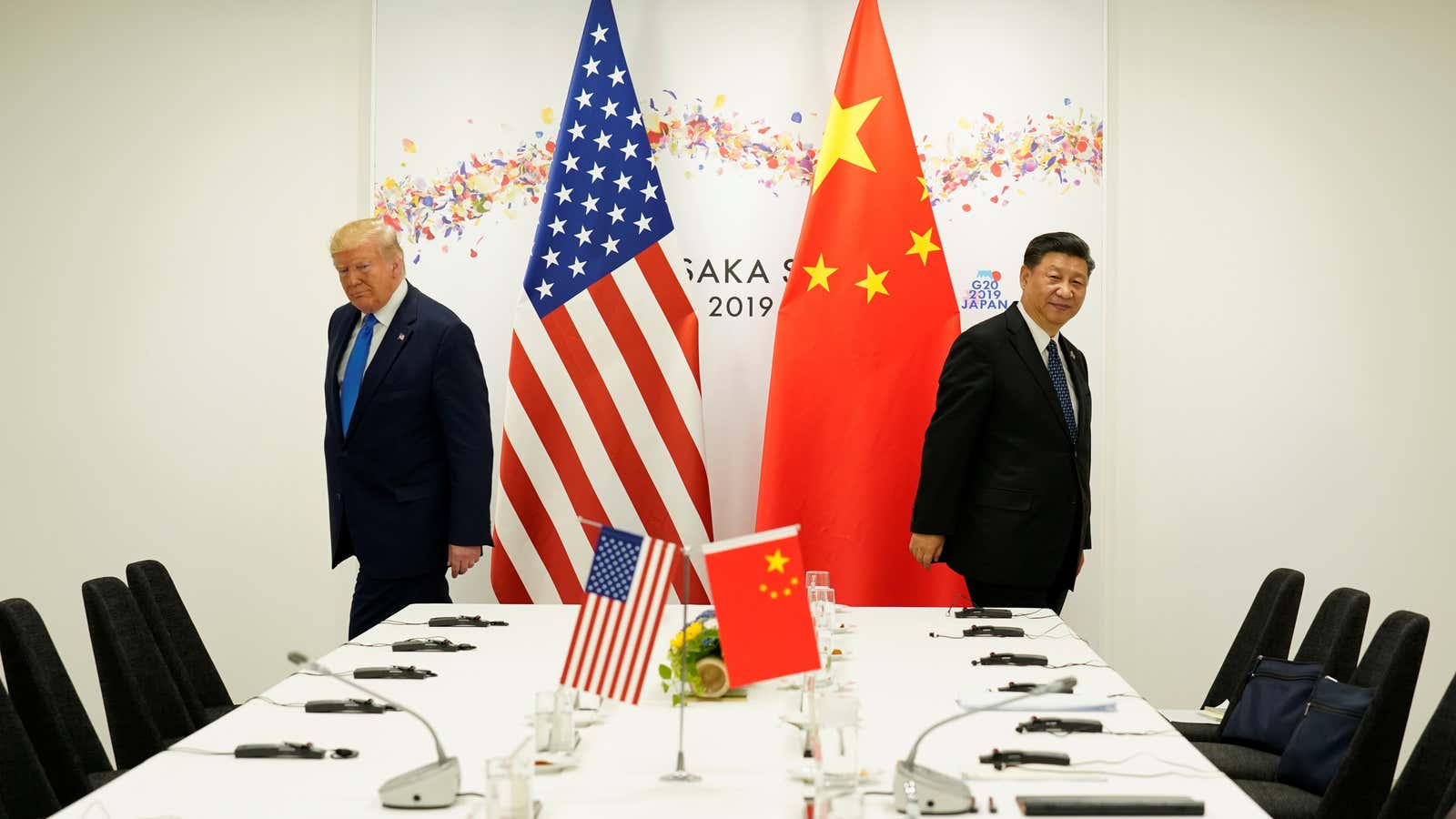Sometimes in financial markets good news looks like bad news. The outcome of the meeting between US president Donald Trump and Chinese leader Xi Jinping at the G20 summit in Japan could be one of those times. The two sides have agreed to a truce in their trade war, with the Trump saying he won’t introduce any more tariffs on Chinese goods for now and US companies can once again do business with the Chinese tech giant Huawei.
Economically, it’s good news for the US that consumers and businesses will not have to pay the price of more or higher tariffs. However, for financial stock and bond markets, which have been soaring recently, it could put a pause on the rally. That’s because markets are fully pricing in an interest rate cut by the Federal Reserve at its meeting at the end of July. Some traders are even expecting policymakers to cut rates by 50 basis points, or 0.5 percentage point. (The Fed usually changes its rate in 25-basis-point increments.)
Traders’ bets on an interest rate cut were emboldened by Fed chairman Jerome Powell saying earlier this month that policymakers are watching developments in trade disputes closely, and that they were ready to take action if the economic outlook didn’t improve. This message helped push the S&P 500 to an all-time high (paywall). In fact, the gains for the US benchmark index in June were the best for a June since 1955, according to Howard Silverblatt, a senior index analyst at S&P Dow Jones Indices.
While the central bank rate-setting committee considers more than just trade policy—inflation and employment data published over the next few weeks are incredibly important—the trade truce slightly reduces the pressure to take action. It certainly limits the prospects of a 50-basis-point cut. A repricing of policy expectations by investors could take some of the wind out of the market rally.
David Page, senior economist at AXA Investment Managers, wrote in a note today:
“While the Fed is likely to provide additional accommodation to offset the effects of trade uncertainty on US sentiment, it is likely to want to wean markets from expectations for four cuts over the coming year. With today’s upbeat news likely to reduce some of the downside risks, we forecast just two cuts this year.”
Of course, we’ve been here before, with a trade truce, a period of calm, and then a sudden escalation by Trump. That could happen again. Also, the current agreement doesn’t roll back any of the tariffs that are already in place. Given the highs of the US stock market—a metric important to Trump—there’s less pressure on the US administration to ease off of China. In all, large uncertainty still remains about US trade policy, which will be enough for many investors to cling to their bets that a rate cut is still coming, if not in July then in September, which could keep markets buoyant for longer. As traders weigh the economic good news against expectations for the Fed’s policy, markets might end up doing very little when they open on Monday.
